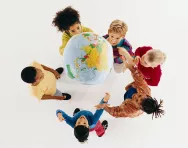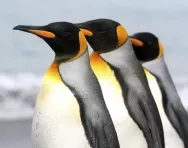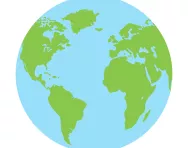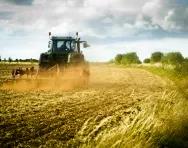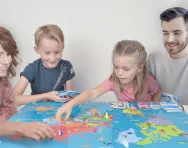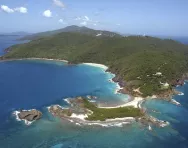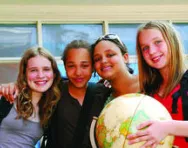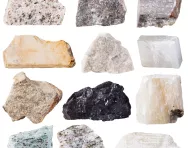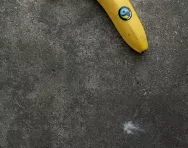TheSchoolRun.com closure date
As we informed you a few months ago, TheSchoolRun has had to make the difficult decision to close due to financial pressures and the company has now ceased trading. We had hoped to keep our content available through a partnership with another educational provider, but this provider has since withdrawn from the agreement.
As a result, we now have to permanently close TheSchoolRun.com. However, to give subscribers time to download any content they’d like to keep, we will keep the website open until 31st July 2025. After this date, the site will be taken down and there will be no further access to any resources. We strongly encourage you to download and save any resources you think you may want to use in the future.
In particular, we suggest downloading:
- Learning packs
- All the worksheets from the 11+ programme, if you are following this with your child
- Complete Learning Journey programmes (the packs below include all 40 worksheets for each programme)
You should already have received 16 primary school eBooks (worth £108.84) to download and keep. If you haven’t received these, please contact us at [email protected] before 31st July 2025, and we will send them to you.
We are very sorry that there is no way to continue offering access to resources and sincerely apologise for the inconvenience caused.
Key Stage 2 Geography – the curriculum
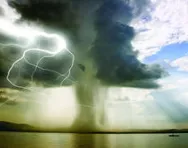
In geography lessons in KS2, children are taught to:
- Locate the world's countries, noting key physical and human characteristics.
- Locate the counties and cities of the United Kingdom and look at hills, mountains, coasts and rivers and understand how some of these aspects have changed over time.
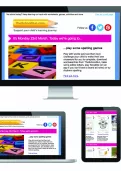
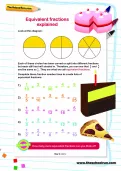
Boost Your Child's English & Maths!
- Weekly programme for each school year
- Worksheets sent direct to your inbox
- Keeps your child's learning on track
- Identify the position and significance of latitude, longitude, Equator, Northern Hemisphere, Southern Hemisphere, the Tropics of Cancer and Capricorn, Arctic and Antarctic Circle, the Prime/Greenwich Meridian and time zones.
- Compare the physical and human geography of England, Wales, Scotland and Northern Ireland, a European country and a region within North or South America.
- Understand physical geography including climate zones, biomes and vegetation belts, rivers, mountains, volcanoes and earthquakes and the water cycle.
- Understand human geography including types of settlement and land use, economic activity and distribution of food, minerals and water.
- Use maps, atlases, globes and digital/computer mapping to locate countries.
- Use the eight points of a compass, four- and six-figure grid references, symbols and key.
- Use fieldwork to observe, measure, record and present the human and physical features in the local area.
KS2 geography lesson examples
Here are some examples of lessons from some schools:
- Year 3 pupils watch a news programme about a river that burst its banks, resulting in a controversial tree clearance operation. They use image-editing software to produce a poster advertising a conservation campaign to protect the trees.
- On a Year 4 residential trip to a village in Ilam, the pupils investigate the difference between living in a village and a town. They list the physical and human features that give Ilam its character using appropriate vocabulary, such as ‘river flowing’ and ‘twisty roads’.
- A Year 5 class express what they have learnt about the movements of water in a river system through dance. The class split up in to small groups and use music and props to portray a particular stage of the river.
- After looking at the way maps are used in storybooks, a year 6 class is given the task of designing their own ‘map story’ in groups of twos or threes. They come up with titles such as The chocolate treasure and The stone of doom.
Help your child with geography at home
- Expose your child to as wide a range of places and cultures as you can. Remember, you can do this through pictures, films and exhibitions, as well as travel.
- Provide your child with a map, atlas or globe and encourage them to use them to find out more about places and environments. Which countries have hot or cold climates? Can your child identify where different people come from, perhaps children in their class?
- Find the geography in your home. Where in the world did your furniture, ornaments or kitchenware come from?
- Discover where the fruits and vegetables in your supermarket originate from. Ask why certain foods cannot naturally grow in the UK’s climate. How might farming modify this?
- Visit the Natural History Museum and learn more about things, such as dramatic rock formations and how they came into being. Find out how the Himalayas were formed, and discover how stones change shape as they travel.
- Choose five local geographical topics and find out more about them. Ideas include traffic, development, population, recycling and local history.
- Use news, documentaries and other television programmes to raise and discuss issues such as poverty, global warming and migration. What are the conflicting viewpoints? Can you see the issues from each viewpoint?
